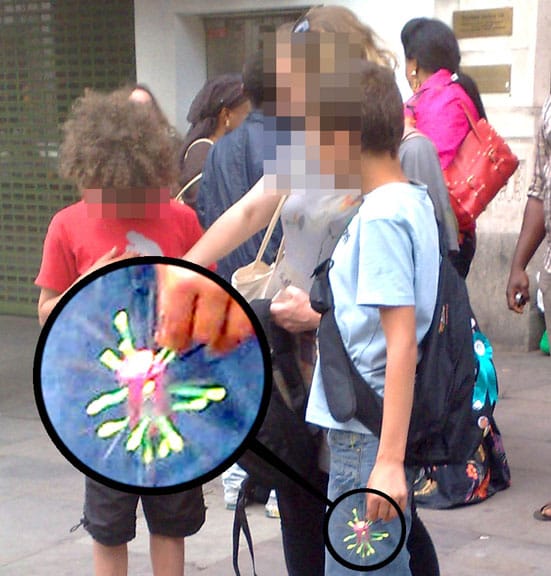In a parallel universe there is a hugely successful television series imported to parallel Britain from parallel America. In it four women in a trendy metropolis discuss issues of contemporary art in a feel-good, upbeat way with a new, slightly risqué topic each week. After a short, humorous intro to demonstrate the need for the investigation, the narrator of the programme types the question across the screen of her parallel Mac and we're off. One week it will be a quirky look at shocking religious imagery, the next it will be the aesthetics of photographs of fisting. At the end of the episode we've all learnt something and had a giggle and the four friends are drinking in a hip bar because one of them is in Marketing - for there is no parallel to Marketing.
One episode starts with an amusing three-minute scene where the narrator walks around an art exhibition looking for the work of a highly recommended, word-on-the-street, up-and-coming young artist. Objects are displayed on shelves around the space but none are by her guy. It is only later, leafing through a trendy parallel magazine that she discovers what she missed. Cut to this weeks title and the words; Yes, but can shelves be art? trail after the cursor.
Thirty fun-filled minutes later we discover the answer? Yes they can, better art, they decide, than all the fisting photographs and blasphemous work combined. But that is in a parallel universe; back here in the real world they are mostly just weak, bland, sub-Ikea exhibition filler.
In FormContent's exhibition It's not for reading. It's for making. earlier this year they asked contributors to suggest book titles, according to their definition of collecting/archiving. Thus an exhibition appeared and some of the books were lightweight and some were damn heavy and together they created an archive. Neat. So how to display them? What about shelving units made from DIY books? No, of course not, I got carried away. Instead Luca Frei especially designed the shelving system that host(ed) the collection, the open shelves offer(ed) open access to an archive in progress. And they were ok as shelves go; unfinished MDF stand-alone units, 12mm horizontals fitted into routed slots in 18mm uprights. It's not Droog but they didn't fall down.
It's not Rodchenko either. The iconic 1925 design for a Workers' Club had a chess table, bookcases and chairs and reading desks. It was a space in which the proletariat could spend their time productively. Revolutionary, modern, exciting and political - bourgeois comfort replaced by geometric functionalism. Judd didn't do shelves. Judd did minimalism, all perfect and that. Wanna check? Put a glass on one at a private view and see how grumpy they get on a scale of 1 to 10.
So what about Liam Gillick then? What's that stuff? Screens and shelves of brightly coloured translucent plastic. Well it's hardly revolutionary, modern, exciting or political. At best it is safe and generally cheerful, which is nice. It may be possible to order by the metre over the phone, which would be a real advantage, but in this universe it has nothing much to say.
Using accepted 21century investigative journalism techniques Artvehicle has a scoop. Many hours of questioning, watching and cross-referencing bus maps and school holidays, all wasted when a carton of cheap fags and some alcopops secured a photo of what could be the Hackney bus-stop defiler (see www.artvehicle.com/editorial/39). (In all fairness they've upped their game and some more considered pieces are appearing, placed even, rather than flung, which is not a hanging technique that is expected to stand the test of time.) So who is this masked child? Does he work alone or is he part of a kollective or perhaps a koalition? Is it a cell, with each cell comprised of a two pre-teens and a nanny? They would be excellent codenames. Or is it something they do on the way home from swimming each week. I must say that I do like that idea somewhat. To paraphrase Picasso I have spent my whole life learning to make sculpture like a bored child sulking in a bathroom.
In this summer issue we present a reviews of boyleANDshaw's performance 'Maiastra, Please Sing!' and Raven Row's new show, interviews with artist duo Luhndahl&Seitl and Abir Boukhari of AllArtNow, Damascus, Lee Campbell's survey of contemporary performance practice and postcards from the 53rd Venice Biennale, Hastings & Bexhill, St Paul de Vence and San Francisco.
Adrian Lee
